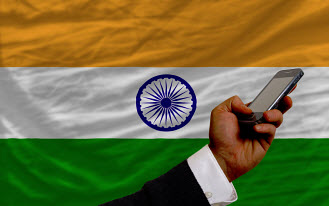Equally, when it comes to GenX consumers, longer video advertising seems to make a connection.
The results of the “Multiscreen Video Best Practices” research report have now been released by the Interactive Advertising Bureau (IAB) following its research into mobile ads in conjunction with Tremor Video and Millward Brown Digital.
They determined that 10 second mobile video advertisements have the greatest effect on Millennial viewers.
These shorter videos as mobile ads were most effective for that generation in terms of their persuasion potential and overall brand appeal. On the other hand, when it comes to appealing to people between the ages of 35 and 54, thirty second videos appeared to have a much greater impact in those two areas. According to the report “Our research shows that for some demographics and some adverting goals this doesn’t hold up. These findings are critical in creating the next generation of multiscreen video advertising.”
As a whole among mobile ads, it was the 30 second videos that had the greatest advantage over all audiences.
Despite the fact that 10 second spots were most effective among Millennials, audiences of all ages did agree that the mobile video ads that were 30 seconds long had a very important advantage of being better for being able to communicate new or complex messages. Among the respondents of a survey who were asked about the amount of new information an ad had provided, 73 percent said the thirty second ads were most effective (versus 68 percent who said the same about the 10 second ads).
The respondents also indicated that larger screens assisted in effectively sharing a message of moderate complexity. Seventy three percent of those polled said that the mobile video advertising they saw on tablet screens were good at sharing new info with them. Comparatively, only 65 percent said the same thing about smartphones.
Moreover, the research determined that tablet video mobile ads are especially engaging among consumers within the 35 to 54 year old age group. Respondents in that category indicated that the advertising they viewed over those larger screens was more “unique”, “interesting” and “involving” than what they saw on other device screens.
NPCI wants to establish a unified payment network based on mobile technology
The National Payments Corporation of India (NPCI) has launched a new initiative that calls for the unification of payment interfaces throughout the country. The initiative aims to give consumers more access to financial services through their mobile devices in order to accommodate the growing demand for mobile commerce. India is considered one of the fastest growing mobile payments markets, with a massive number of consumers beginning to rely on their smartphones for shopping online and physical stores.
A unified payment network could make mobile commerce more attractive to consumers
NPCI aims to help establish a Unified Payment Interface (UPI), which will allow consumers to collect and send funds through a mobile network. Such a network would leverage a consumer’s actual identity, providing some degree of security when participating in mobile commerce. Consumers would be able to use a password associated with their mobile devices to authenticate their identity and can use the UPI network to send and receive money in real-time. The demand for such money transfer services has grown as more consumers have begun to gain access to smartphones.
India is home to one of the fastest growing mobile shopping markets
 India is home to one of the fastest growing smartphone markets in the world. Currently, only 53% of Indians have bank accounts, but more consumers are opting to side with financial institutions in order to take advantage of mobile payments services. Approximately 80% of Indians currently have access to smartphones, which has created a significant opportunity for banks, especially those that seek to break into the mobile sector. As banks begin to enter the mobile market, more consumers are expected to participate in the mobile commerce space.
India is home to one of the fastest growing smartphone markets in the world. Currently, only 53% of Indians have bank accounts, but more consumers are opting to side with financial institutions in order to take advantage of mobile payments services. Approximately 80% of Indians currently have access to smartphones, which has created a significant opportunity for banks, especially those that seek to break into the mobile sector. As banks begin to enter the mobile market, more consumers are expected to participate in the mobile commerce space.
Merchants could find new opportunities by engaging the mobile commerce market
A unified payment network could unlock new economic opportunities for merchants in India. These merchants are beginning to feel pressure to engage mobile consumers, but few have been able to do so. In the coming years, new mobile services are expected to enhance the ability of merchants to engage consumers, especially those that rely heavily on mobile shopping.


 India is home to one of the fastest growing smartphone markets in the world. Currently, only 53% of Indians have bank accounts, but more consumers are opting to side with financial institutions in order to take advantage of mobile payments services. Approximately 80% of Indians currently have access to smartphones, which has created a significant opportunity for banks, especially those that seek to break into the mobile sector. As banks begin to enter the mobile market, more consumers are expected to participate in the mobile commerce space.
India is home to one of the fastest growing smartphone markets in the world. Currently, only 53% of Indians have bank accounts, but more consumers are opting to side with financial institutions in order to take advantage of mobile payments services. Approximately 80% of Indians currently have access to smartphones, which has created a significant opportunity for banks, especially those that seek to break into the mobile sector. As banks begin to enter the mobile market, more consumers are expected to participate in the mobile commerce space.